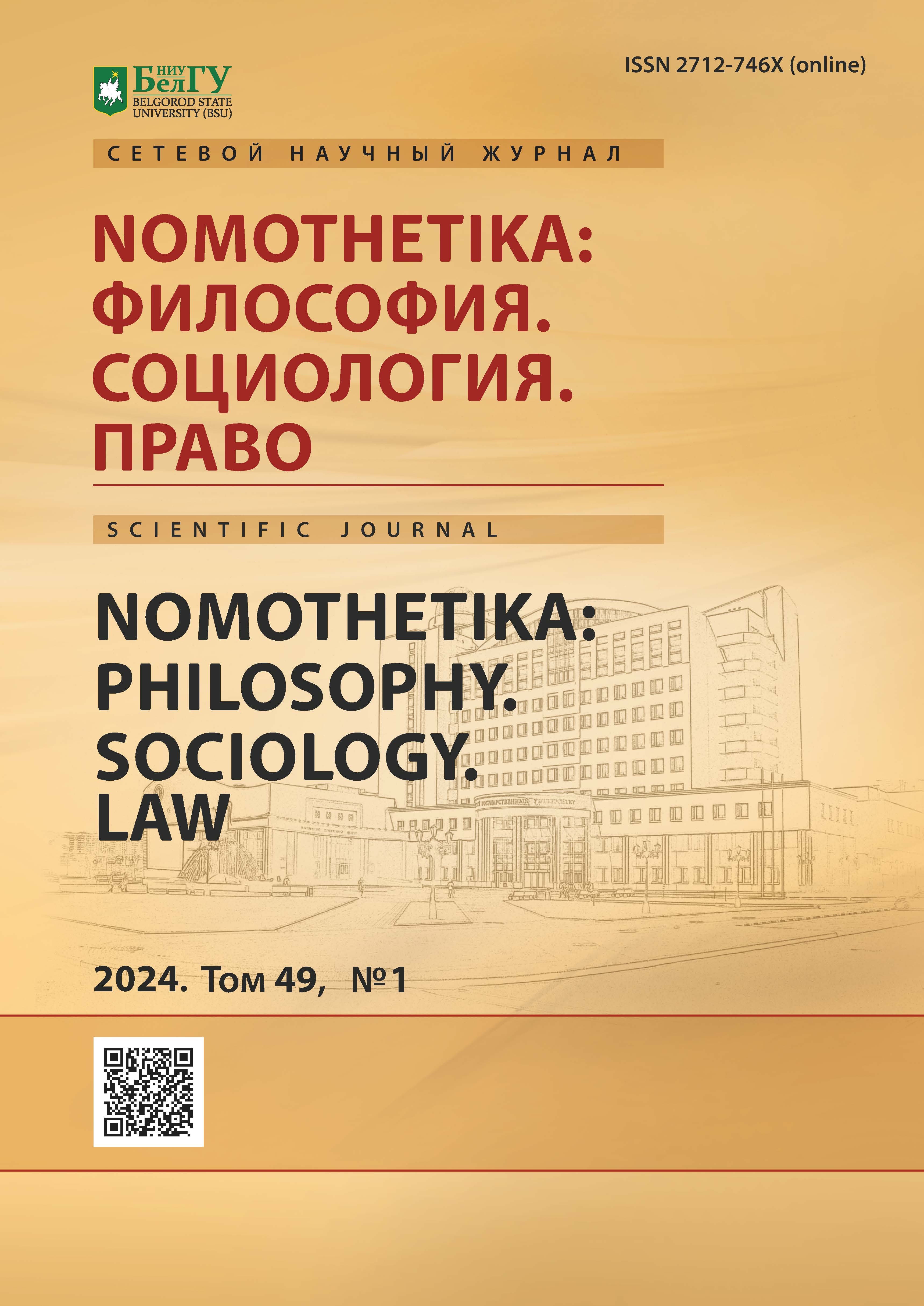Mythological Chronotope and Archetypes of Everyday Life
DOI:
https://doi.org/10.52575/2712-746X-2024-49-1-165-172Keywords:
mythologica, chronotope, Tempus, Templum, theory of archetypes, archetypes of everyday life, M. Eliade, K.-G. JungAbstract
This article is devoted to the consideration of the concept of the mythological chronotope, represented by two basic components: Tempus (Sacred Time) and Templum ("Temple"). The concept was developed in the works of the classics of cultural studies, philosophy, and comparative religious studies ‒ M. Eliade, E.M. Meletinsky, V.N. Toporov. M. Eliade often uses the concept of "archetype" in his works on the mythological chronotope ‒ however, not in the sense in which this term is used by K.G. Jung. The work is based on the use of comparative, comparative-historical, systemic and hermeneutical scientific methodology. The analysis reveals significant similarities and differences between Eliade and Jung's approaches to the term "archetype": the first scientist examines its content in a cultural and historical context, the second – in a psychological one. The main difference between these approaches is: Eliade saw the contradiction between the sacred and the everyday world as insurmountable one, Jung proceeded from their essential unity. It seems appropriate in today's conditions to develop the category of "archetypes of everyday life" with the allocation of such their clusters as Home, Family, Work, Relationships, Health, Leisure, Everyday life, etc.
Downloads
References
Мелетинский Е.М. 1995. Поэтика мифа. М., Наука, 408 с.
Пятков Н.А. 2011. Архетип в его отношении к архаическому мировосприятию и мифомышлению, как онтологическая проблема: Автореф. дисс. … канд. филос. наук. Екатеринбург, 39 с.
Топоров В.Н. 2010. Мировое дерево. Универсальные знаковые комплексы. Т. 1. М., Рукописные памятники Древней Руси, 448 с.
Элиаде М. 1996. Аспекты мифа. М., ИНВЕСТ-ППП, 240 с.
Элиаде М. 1999а. Йога: бессмертие и свобода. СПб, Лань, 448 с.
Элиаде М. 1987. Космос и история. М., Прогресс, 312 с.
Элиаде М. 2002. Оккультизм, колдовство и моды в культуре. М., ИД «Гелиос», 224 с.
Элиаде М. 1999b. Очерки сравнительного религиоведения. М., Ладомир, 488 с.
Элиаде М. 1994. Священное и мирское. М., Изд-во МГУ, 144 с.
Эстес К. 2001. Бегущая с волками. Женский архетип в мифах и сказаниях. М., София, 448 с.
Юнг К. 2020. Проблемы души нашего времени. СПб, Питер, 336 с.
Юнг К.-Г. 2003. Психология и алхимия. М., Рефл-бук, 591 с.
Юнг К.-Г. 2009. Сознание и бессознательное. М., Академический проект, 188 с.
Юнг К.-Г. 1997. Человек и его символы. М., Серебряные нити, 368 с.
Barth C. 2013. In illo tempore, at the center of the world: Mircea Eliade and religious studies' concepts of sacred time and space. Historical Social Research, 38(3): 59‒75. DOI
https://doi.org/10.12759/hsr.38.2013.3.59-75.
Hauglid B.M. 1994. Sacred Time and the Temple. In: Temples of the Ancient World: Ritual and Symbolism, ed. Donald W. Parry. Salt Lake City: Deseret Book: 636‒645.
Hultgard A. 2022. The End of the World in Scandinavian Mythology. Oxford, Oxford University Press, 494 р.
Meagher R.E. 1980. Mircea Eliade: methodology and the meaning of the sacred. Hermathena, 128: 7‒19.
Mirdamadi Y. 2015. The Plurality of the Sacred. Open Journal of Philosophy, 5: 397‒402. DOI: 10.4236/ojpp.2015.57048.
Jung C.G. 1969. Concerning Mandala Symbolism In: Jung C.G. Collected Works. Vol. 9 (Part 1). Princeton, Princeton University Press: 355‒384.
Abstract views: 188
Share
Published
How to Cite
Issue
Section
Copyright (c) 2024 NOMOTHETIKA: Philosophy. Sociology. Law

This work is licensed under a Creative Commons Attribution 4.0 International License.


